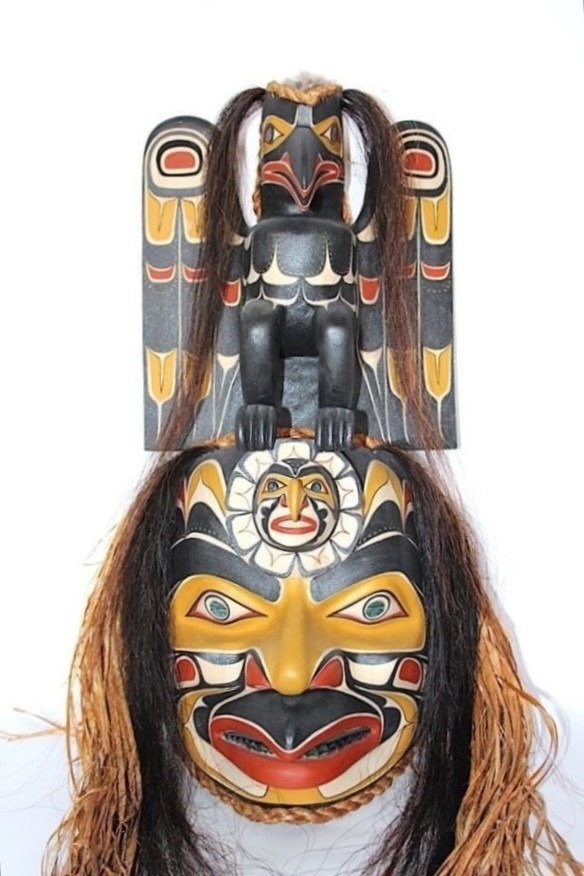Randy Stiglitz

Born in 1956 (Vancouver, British Columbia)
Randy Stiglitz is recognized as one of the most skilled and respected Northwest Coast Indigenous carvers of his generation. Born on the Capilano Reservation in North Vancouver and a member of the Sechelt Nation through his mother’s Coast Salish heritage, Stiglitz came of age during a pivotal moment in Indigenous art history. In the early 1970s, Northwest Coast art and culture were undergoing a powerful resurgence—traditional carving was returning to prominence after decades of suppression, and a new generation of artists was beginning to shape the contemporary Indigenous art market.
For Coast Salish artists, this was a complex time. Many traditional Salish objects, such as ceremonial regalia and certain carved forms, were never intended for public sale. Their spiritual and cultural importance meant they were kept within the community, sometimes burned after ceremonial use to protect the knowledge they embodied. The Sxwayxwey mask, used in healing ceremonies, was one of the only documented Salish masks and remains a deeply protected object. Because of this cultural protection, many Coast Salish artists of the era—including Stiglitz—explored other visual traditions, particularly those of the Kwakwaka’wakw, whose dramatic sculptural style had an established market presence through commissions such as the Thunderbird Park project in Victoria.
Eager to develop his skills, Stiglitz moved to Victoria for four years to work closely with the many Kwakwaka’wakw artists based there. He trained under two of the most respected carvers of the time, Gene Brabant and John Livingston, at the Hunt family studio—an environment that was both technically rigorous and steeped in cultural tradition. This experience gave Stiglitz a mastery of the Kwakwaka’wakw carving style, known for its bold form, strong sculptural volumes, and intricate painted surfaces.
After returning to Vancouver, Stiglitz committed himself fully to carving, developing a body of work that blends the influences of multiple nations while staying rooted in his own heritage. His practice today is a refined synthesis of Coast Salish storytelling, Kwakwaka’wakw dramatic form, and the elegant, flowing formline structures associated with Haida and Tlingit art. Haida art, in particular, is renowned for its precise balance of line and shape—its characteristic ovoids, U‑forms, and S‑curves used to create stylized representations of animals, spirits, and legendary figures. These forms are not merely decorative; they are part of a visual language that encodes complex narratives and relationships, making them instantly recognizable to collectors and cultural experts alike.
Stiglitz’s work shows a deep understanding of this visual language. He carves primarily in cedar, a wood highly valued on the Northwest Coast for its workability, durability, and ceremonial importance. His surfaces are often brought to life with abalone inlay, shimmering with iridescence that catches the light at every angle. He incorporates natural materials such as cedar bark, horsehair, and pigments derived from both modern and traditional sources, giving his work a tactile and layered quality. Every cut, every curve in his masks and sculptures reflects both technical control and a sensitivity to the story being told.
Over the decades, Stiglitz has produced an impressive range of works: large-scale ceremonial masks, intricate portrait masks, totemic panels, and sculptural representations of key figures in Northwest Coast mythology. He often works in close collaboration with his wife, Janice Morin, a Cree–Coast Salish artist whose own carving and painting expertise enhances the depth and detail of their joint creations. Together, they produce works that are culturally resonant, visually commanding, and often regarded as museum-quality examples of contemporary Indigenous art.
Today, Randy Stiglitz’s work is represented by leading Northwest Coast and Inuit art galleries and can be found in significant private and institutional collections across North America and internationally. His pieces are sought after for their ability to bridge cultural traditions while speaking to modern sensibilities—appealing to collectors who value both the mastery of traditional techniques and the originality of an artist who has spent more than fifty years refining his craft. Through his art, Stiglitz continues to contribute to the ongoing story of Northwest Coast carving, holding a place of respect among the very best carvers working today.
By this artist
No Results...
Sorry, there were no results found with these search parameters. Please reset and try again.
